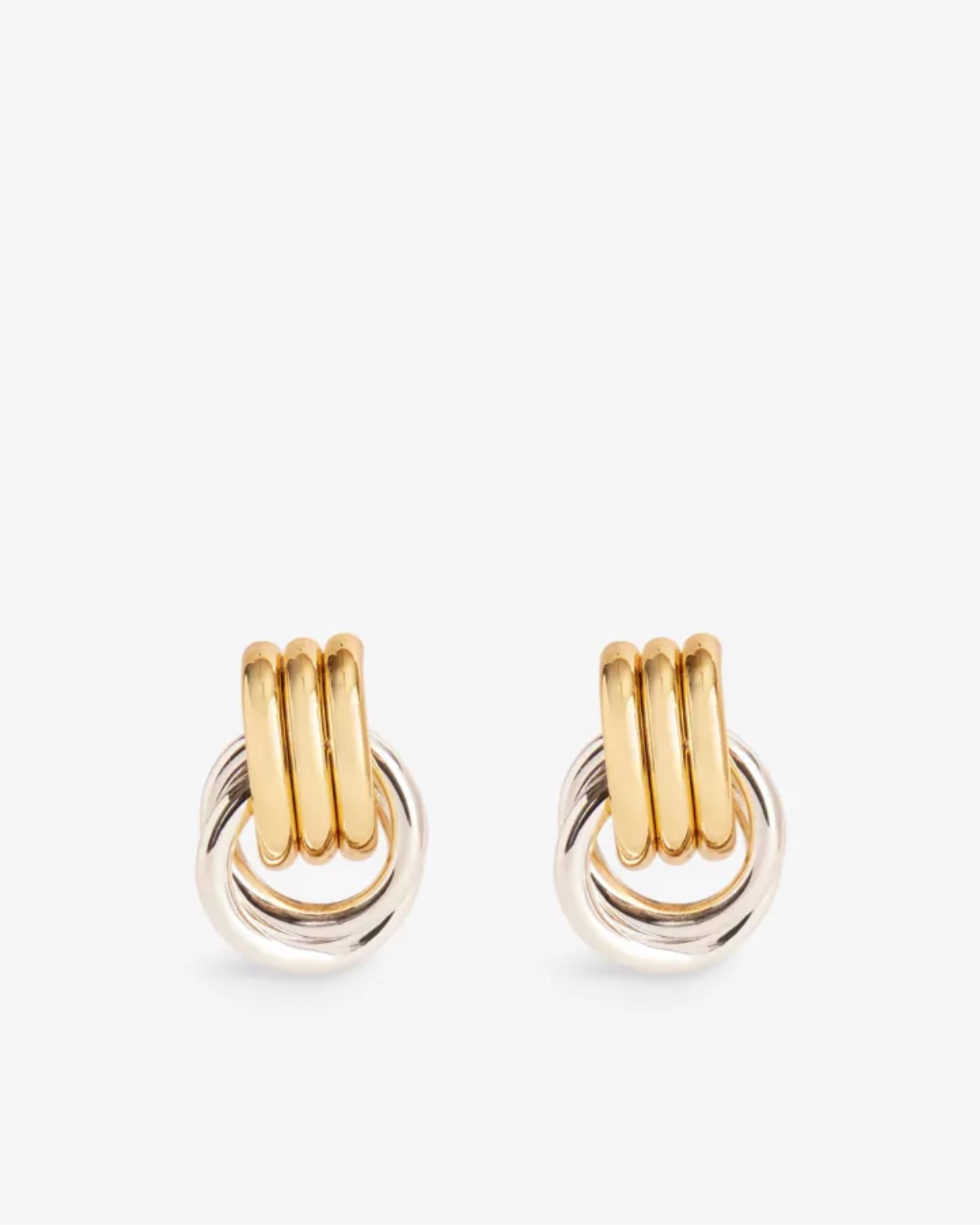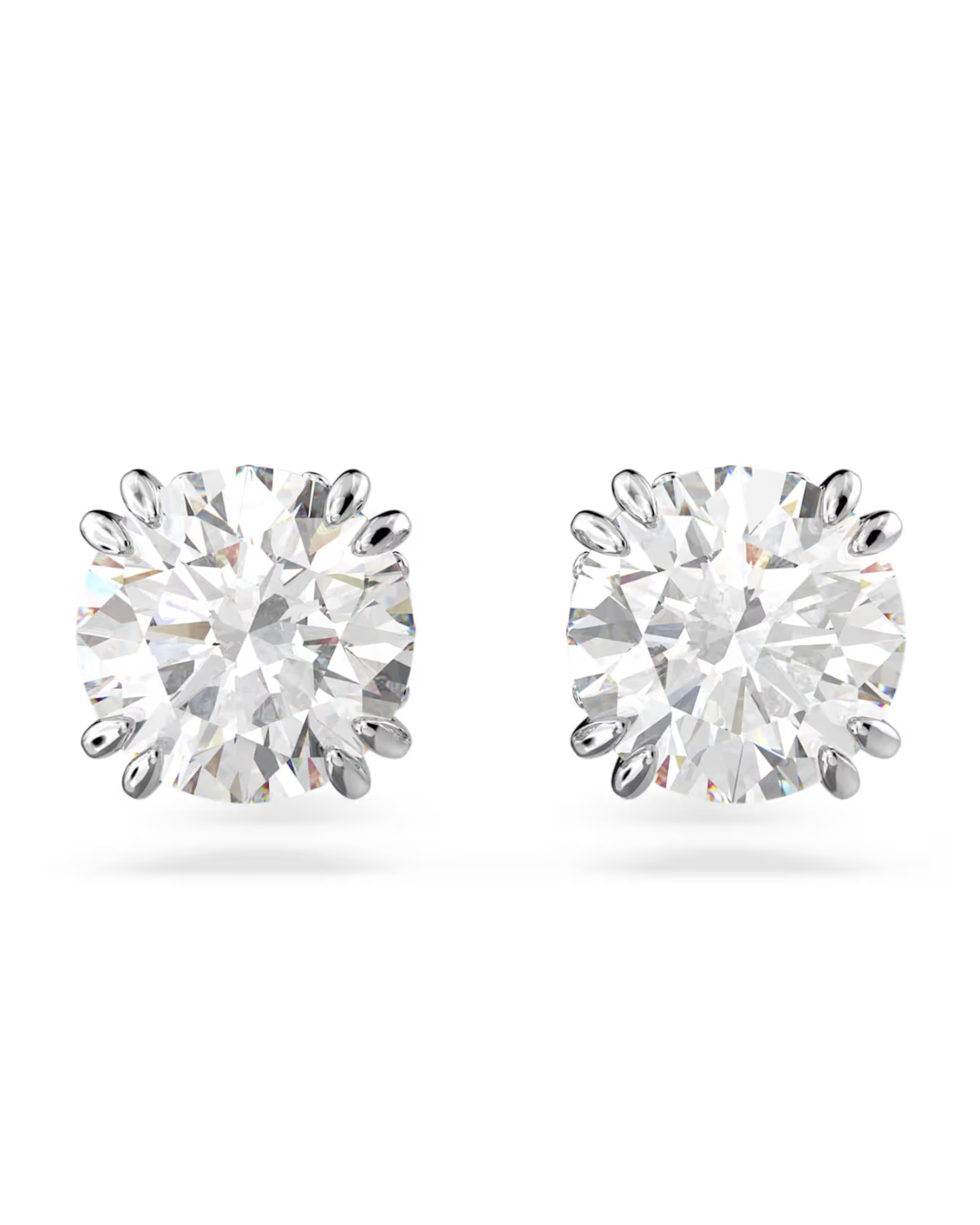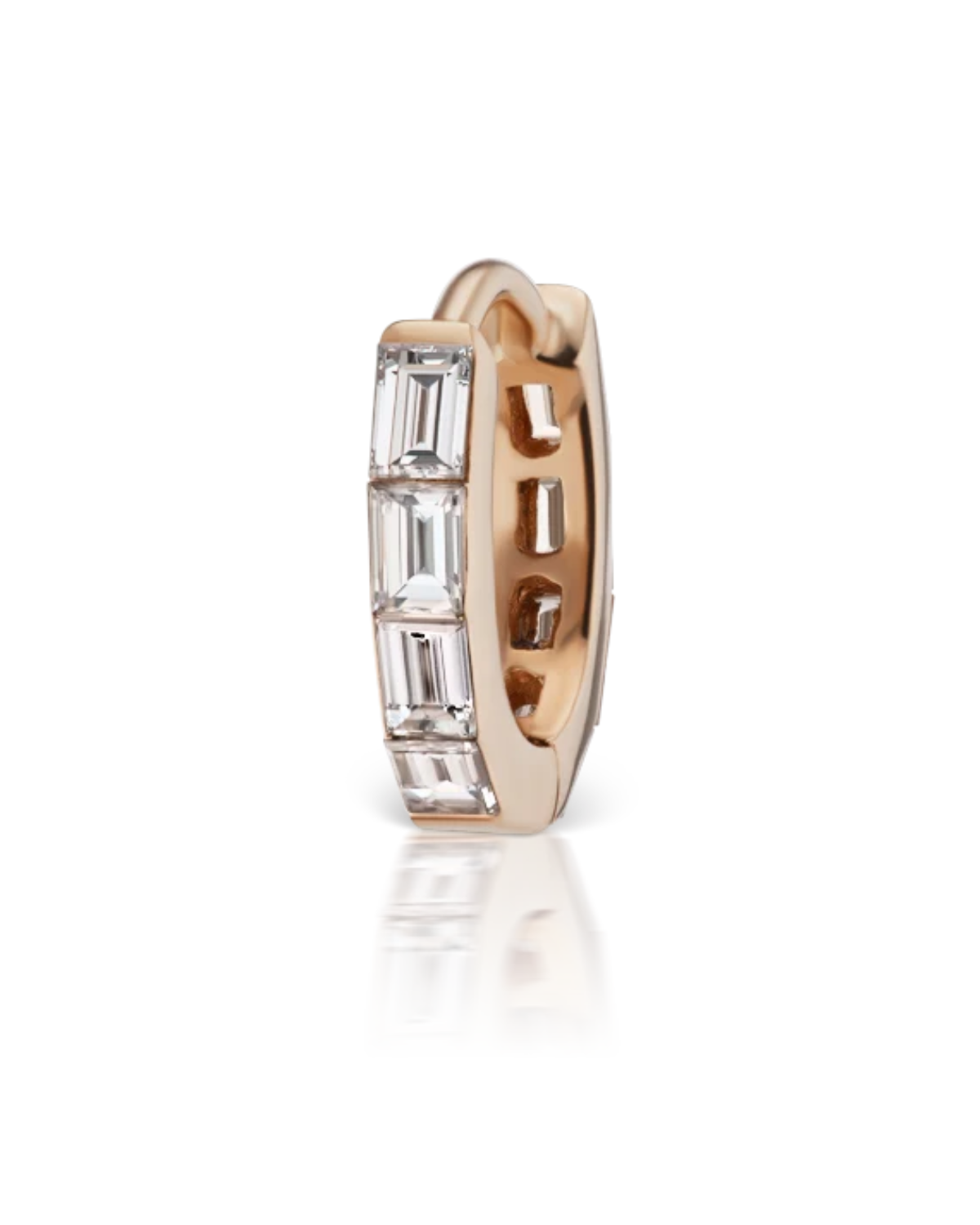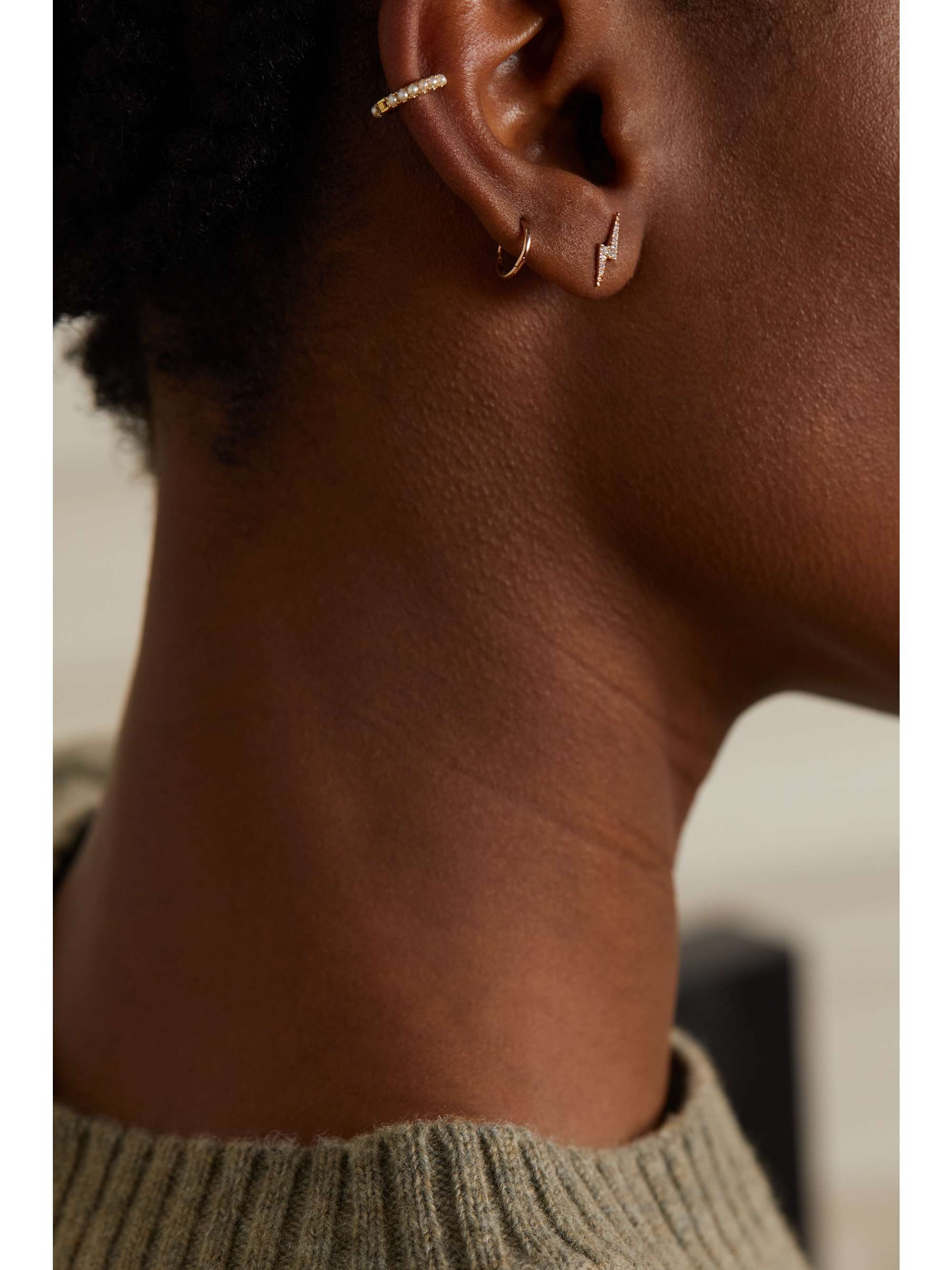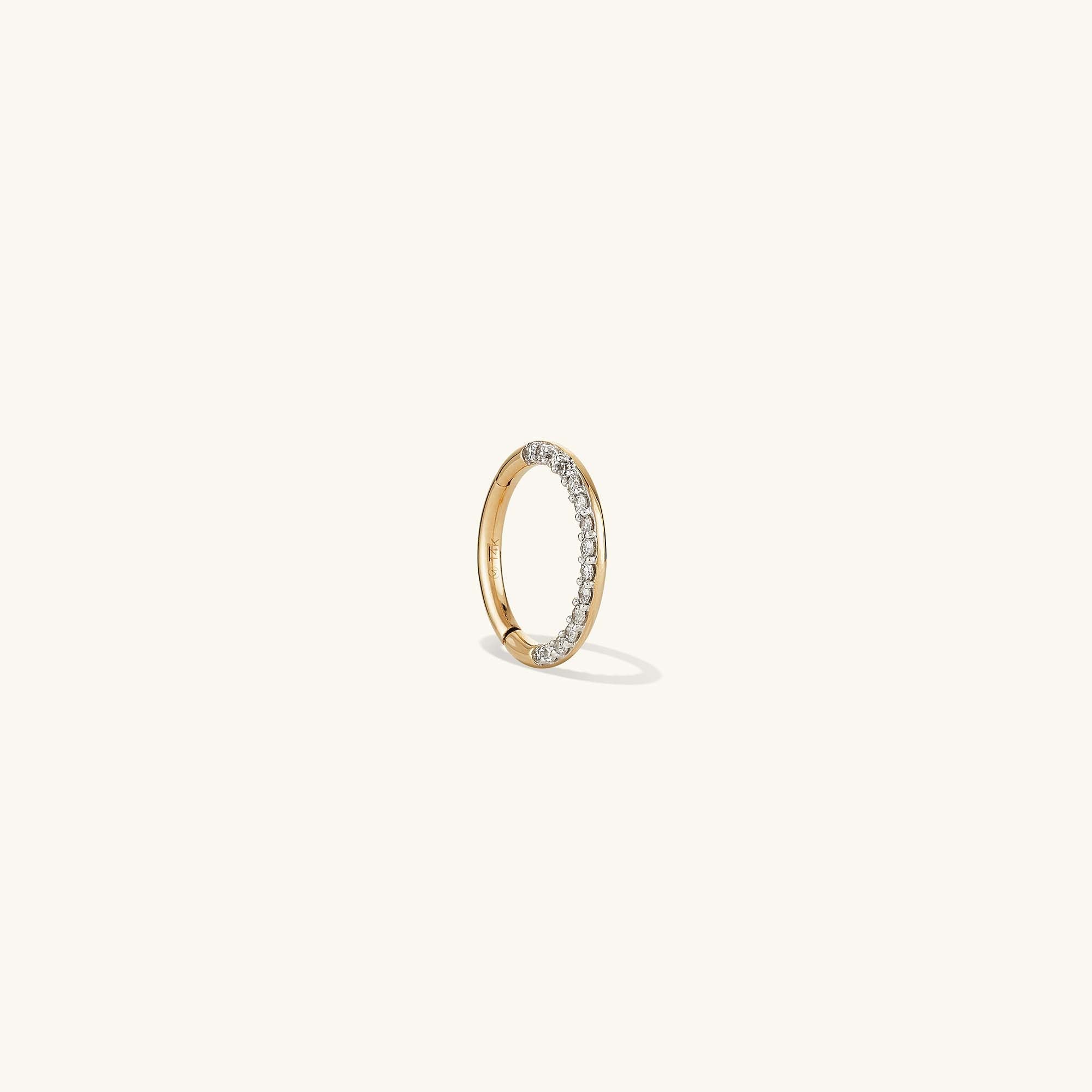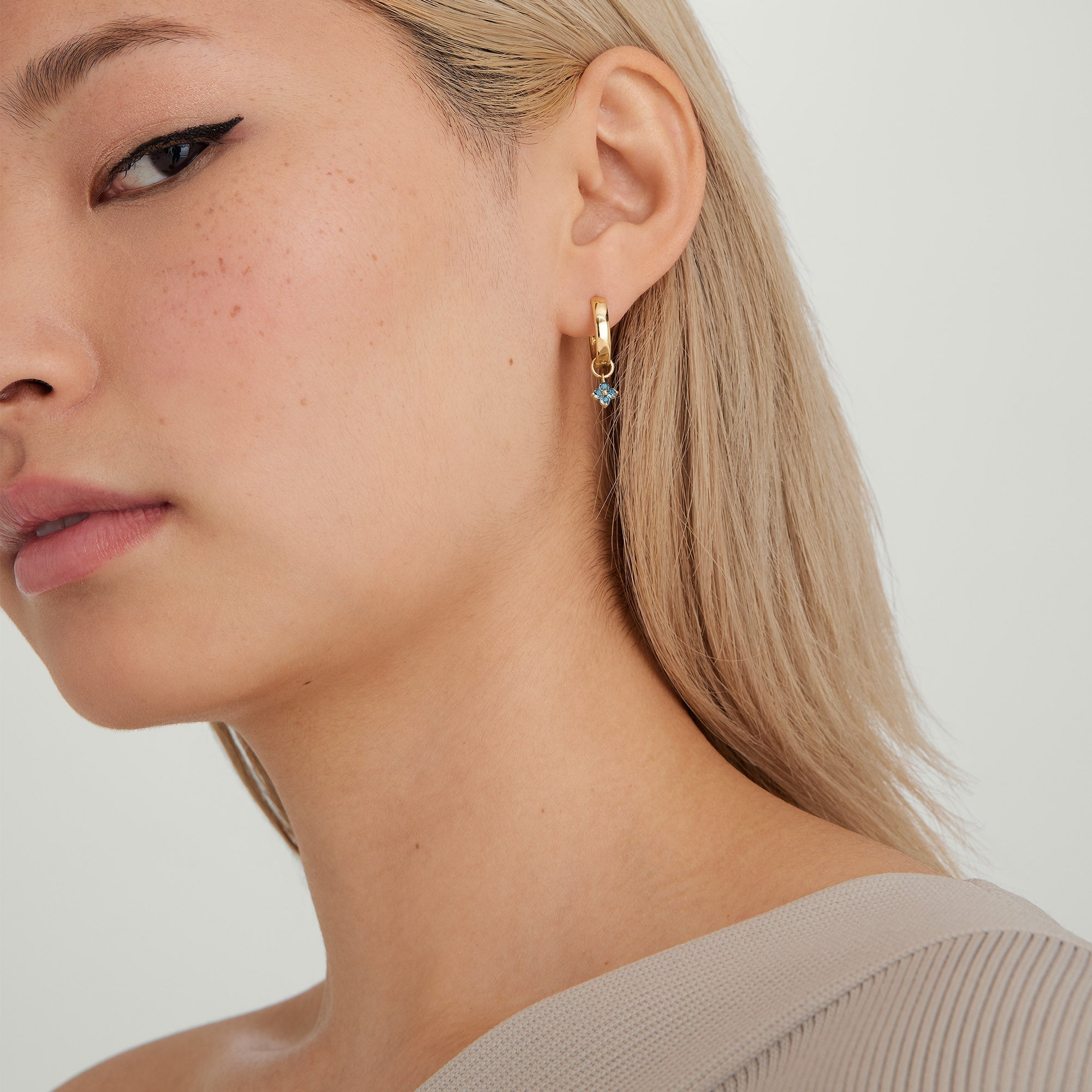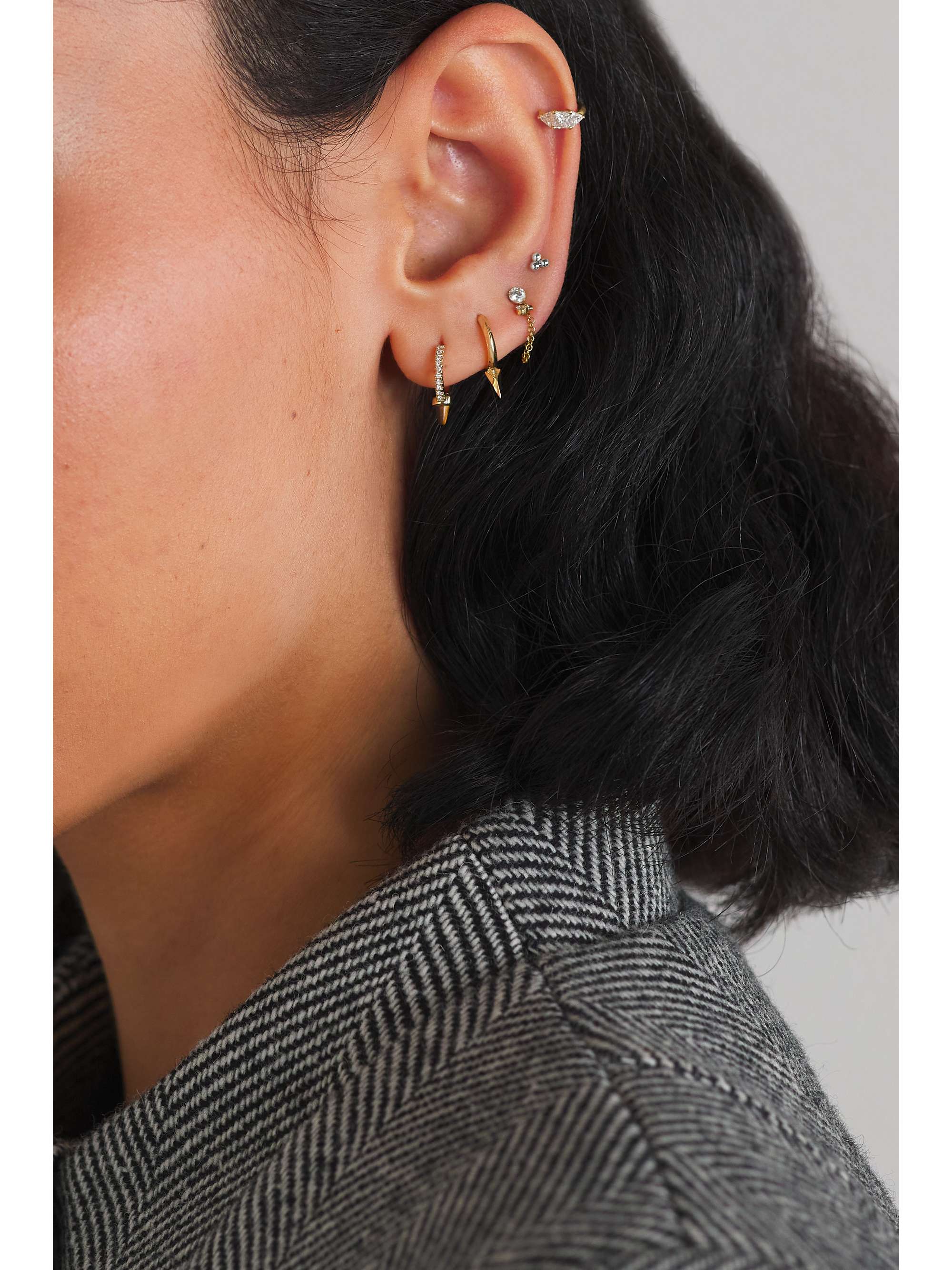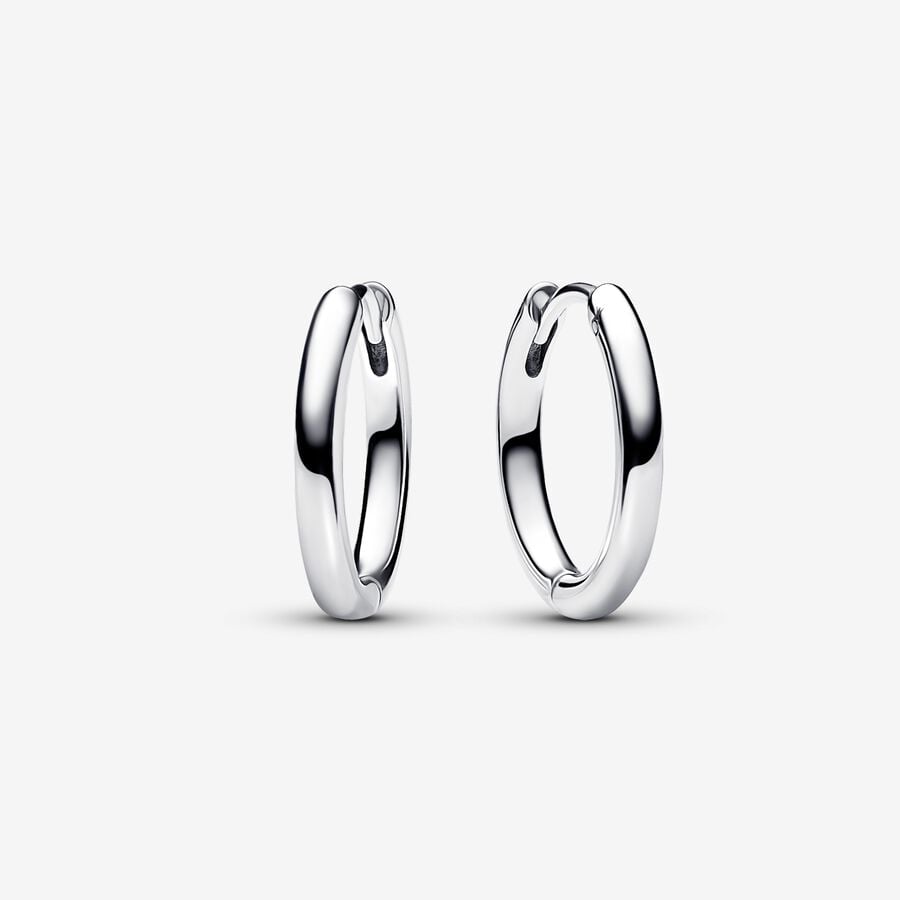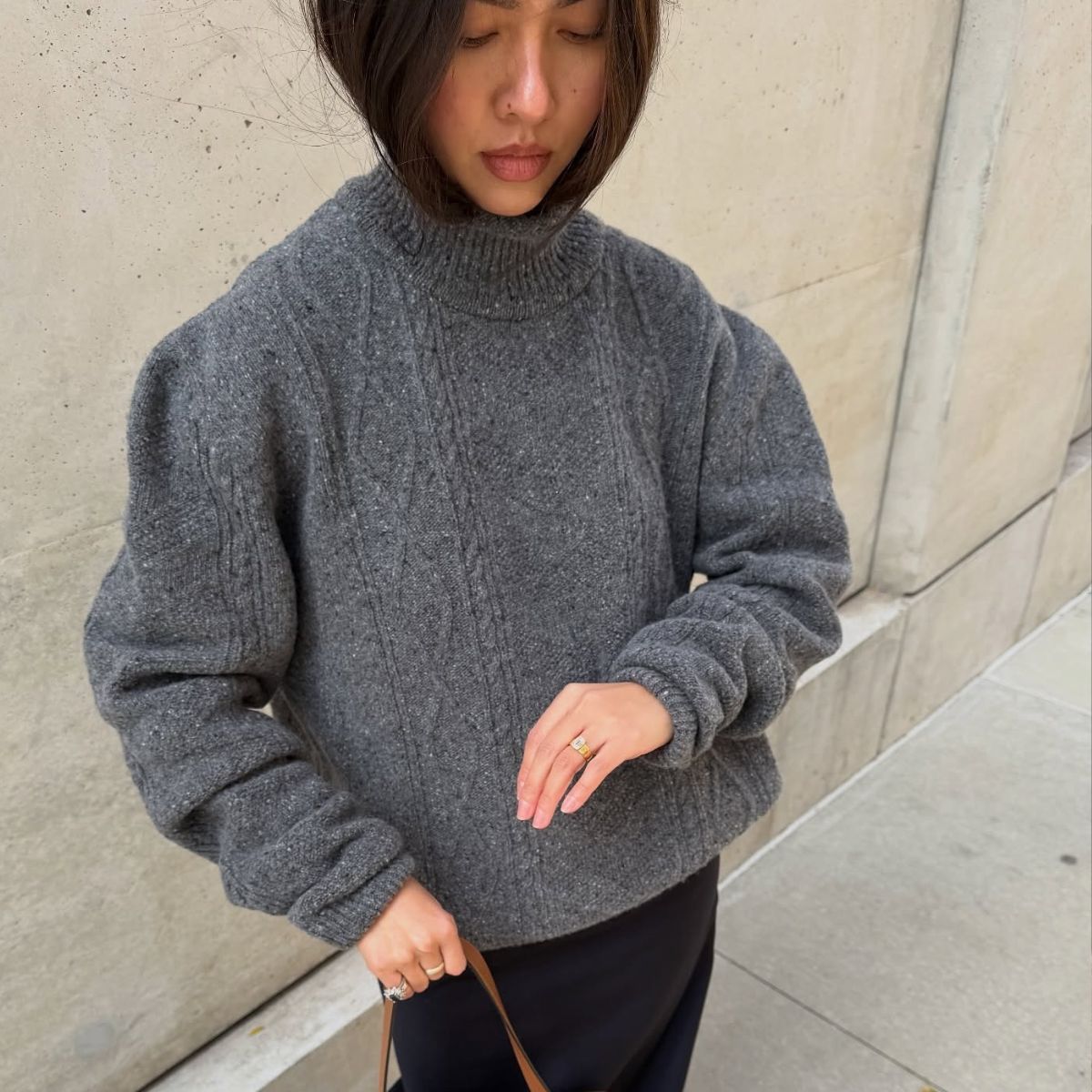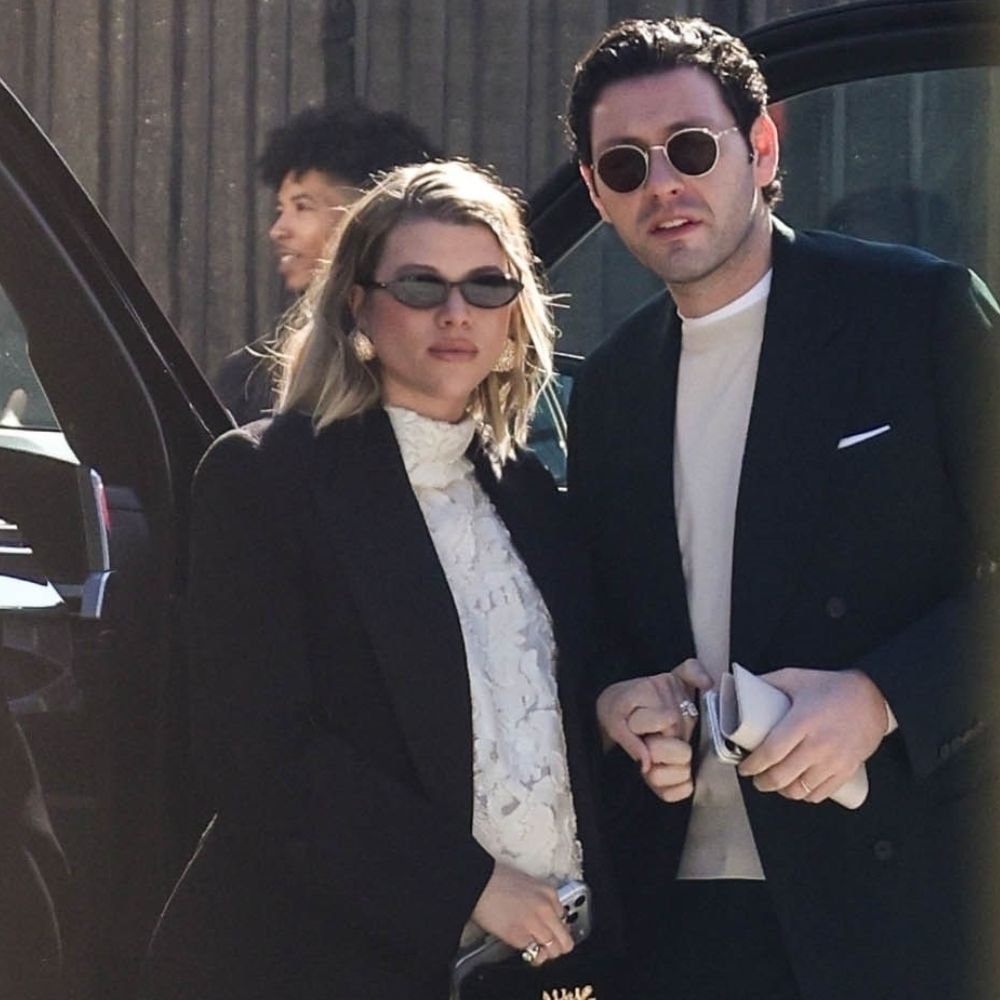The 13 Chicest Ear Piercings You Can Get (Plus the Anticipated Pain Levels for Each One)
We're talking you through 13 of the best ear piercings, including the healing time and the best jewellery to wear.

- Types of Ear Piercings
- 1. Standard Lobe Piercing
- 2. Floating Lobe Piercing
- 3. Tragus Ear Piercing
- 4. Flat/Scapha Piercing
- 5. Forward Helix Piercing
- 6. Helix Piercing
- 7. Industrial Piercing
- 8. Auricle Piercing
- 9. Rook Piercing
- 10. Daith Piercing
- 11. Conch Piercing
- 12. Orbital Piercing
- 13. Anti-Tragus Piercing

Ava Gilchrist
Full disclosure: I write this piece on the different types of ear piercings as someone who only has their ear lobes pierced. Sure, I have three on each ear, and yes, my first of three ear piercings was done at Claire's Accessories when I was 10. Okay, I also had my last piercing done there. (Yes, it was recently—I'm there for the nostalgic Y2K beauty vibes, OK?)
While I love experimenting with earring trends, especially multiple lobe piercing combinations—I adore a classic stud, huggie earring and larger chunky hoop earring combination—I'm tempted to get other areas of my ears pierced. But beyond the lobes, I'm somewhat clueless about what an ear piercing entails, the pain levels, prices, or even what kind of jewellery suits which area. While I love keeping up with celebrity beauty advice, I've never followed in the footsteps of piercing aficionados like Scarlett Johansson or Victoria Beckham, who both have multiple ear piercings, and experimented elsewhere.
So when this article was assigned to me to write, I felt it was the perfect time to step up my knowledge on all the different types of ear piercings out there and learn my tragus piercings from my helix piercings.
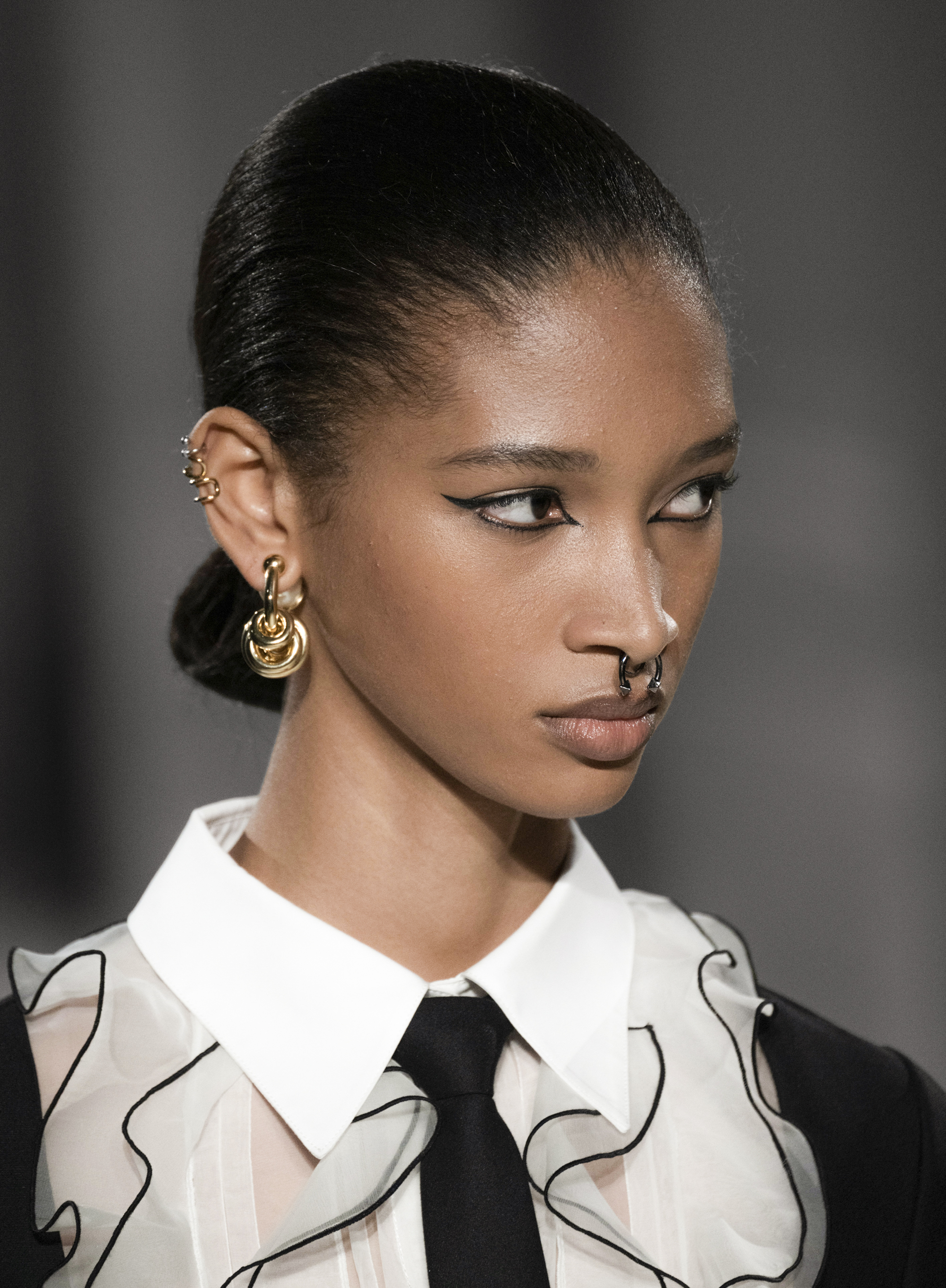
Beyond the most popular styles, I've learned that there are many types of ear piercings available. Among them, they have different piercing placements, different levels of pain (more on that below) and certain tips for aftercare too. To find out more, I reached out to three very knowledgeable ear piercers to give us the lowdown on all the different types of ear piercings. But first, there are a few pointers you should know about before considering an ear piercing.
How Painful Is an Ear Piercing?

"When it comes to piercings, pain is relative," says Yasmin Jabbar, ear piercer for Matilde. "Everyone has different pain thresholds and clients rarely have the exact same experience for most piercings," she adds.
"In the grand scheme of things, the actual piercing itself takes a second or two, so it's absolutely manageable and worth it! I would describe it more as a hot sensation rather than pain, but if you are feeling nervous or worried about the pain, let your piercer know so that they can support you and explain the process to you to put you at ease."
How Should You Prepare for an Ear Piercing?
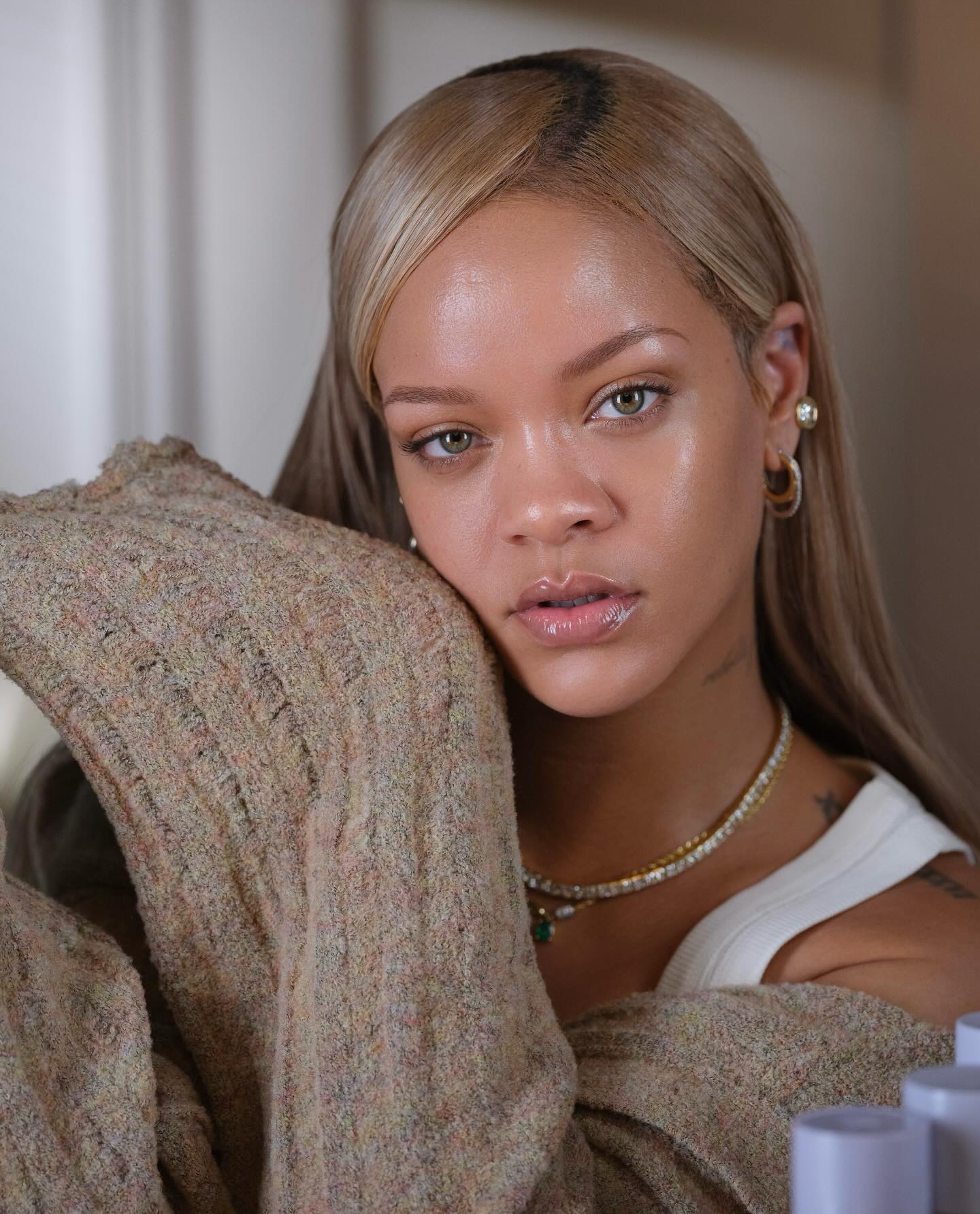
"In case you're uncertain about the earring design or type of piercing you'd like, feel free to book a consultation before your appointment or ask any questions on the day itself," says Svetlana Hristova, head of piercing at Lark & Berry. "A brief conversation with your piercer before the procedure can work wonders, particularly if you're feeling nervous."
It's also the ideal time to assess your ear anatomy, and what piercings you might want to consider in the future too.
"The next step is to go to a reputable piercer and ask them whether the piercings you want will work with your ear anatomy. Let them know what future piercings you're planning so that they can pierce with that in mind," says Laura Bond, founder of Laura Bond.
"If you've only got your lobes pierced, then starting with a second or third lobe can be a good way to ease into the curated ear trend. Flat piercings and tragus piercings are also very cute and can take less time to heal than the helix or conch," she says.
As for the day itself, there are things you can do to make the experience as seamless and pain-free as possible. "Taking pain relief can help alleviate discomfort to a certain extent, but be aware that some painkillers may thin the blood and cause bleeding during the piercing process," says Hristova, and ensure you disclose any medications or health conditions on the consent form before your piercing.
"It's essential not to get pierced on an empty stomach or after consuming alcohol," she says. "Fill out the consent form attentively, providing accurate and thoughtful responses to all questions."
To prevent infections or irritations, she also recommends avoiding getting pierced before embarking on a long journey by train or aeroplane. "Keep in mind that being in good health when getting pierced is crucial for a swift and problem-free healing process," she says.
"Refrain from getting a piercing if you are pregnant, breastfeeding, or have recently undergone other procedures such as surgery or getting a tattoo in the same area."
What Aftercare Advice Should You Follow After Getting an Ear Piercing?
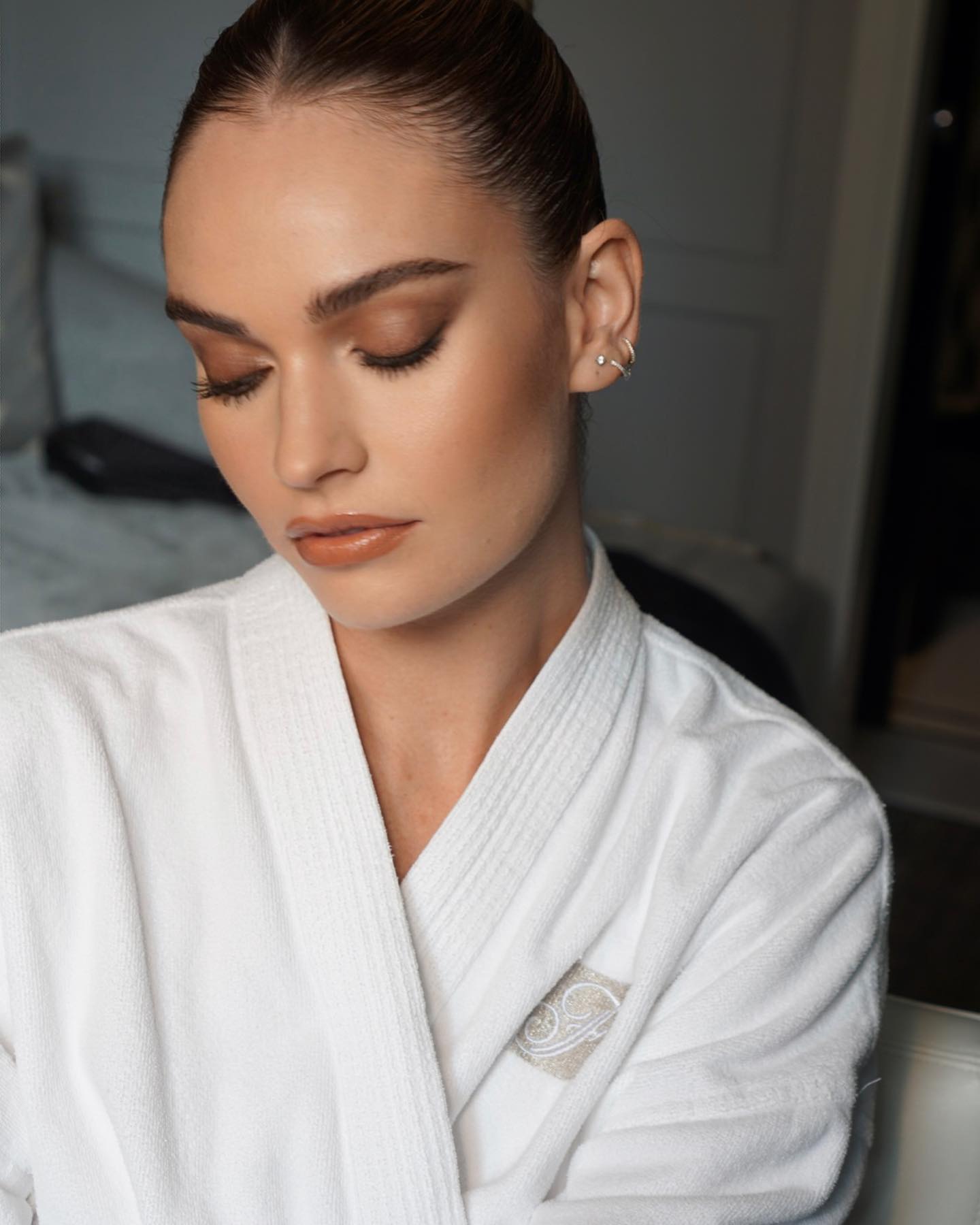
You will want to diligently follow your practitioner's aftercare advice on the day to help your piercing heal well and avoid any issues, regardless of the type of ear piercing you get. "The healing phase is just as crucial for achieving optimal results as the piercing procedure itself," says Hristova.
"Begin using the aftercare lotion on the same day as your appointment, and we recommend doing so twice daily (morning and evening) for at least four weeks. Lobe piercings tend to heal more quickly than cartilage piercings, but there's no such thing as over-cleaning."
As well as keeping the area clean, you'll want to avoid touching your new piercing unnecessarily. "It's important to note that excessive touching or cleaning the piercing with unwashed hands can sometimes cause issues. To ensure a smooth recovery, avoid swimming pools for two weeks, although sea water is acceptable," says Hristova. You'll also want to avoid saunas and steam rooms for around four weeks.
And don't forget, you should avoid changing the jewellery in your piercing until it has fully healed. "This can compromise the health of your piercing and can lead to an infection," says Jabbar. By following these steps, you'll be on your way to a successful healing process.
Ready to take the plunge? Ahead, you'll find our experts sharing everything you need to know about the different types of ear piercings, an explainer of where they're positioned in the ear and Who What Wear UK's specialist-approved pain guide.
Types of Ear Piercings
1. Standard Lobe Piercing
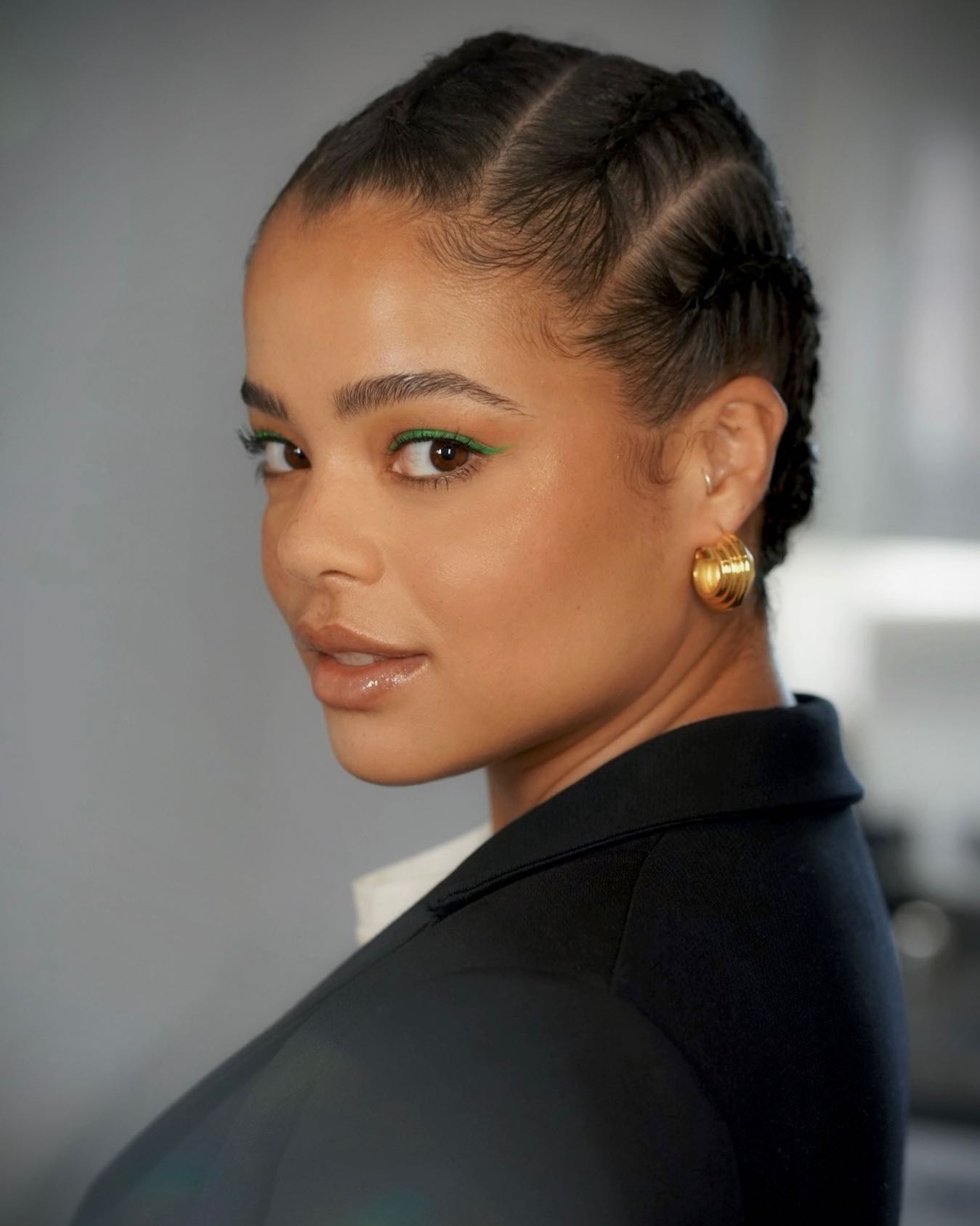
Name of piercing: Standard Lobes
Where on the ear: The most fleshy part and the bottom of the ear
Healing time: 2-4 months on average
Pain scale: 2/10
The piercing technique: As for the piercing technique, a needle is the best way to go. "Using a needle rather than a gun is important when piercing ears because it is much safer and more precise," says Bond. "Needles are designed specifically for piercing and provide more accuracy, less trauma to the tissue, and a better healing environment due to their sharpness and small size. Guns, on the other hand, can cause trauma to the tissue and increase the risk of infection."
2. Floating Lobe Piercing
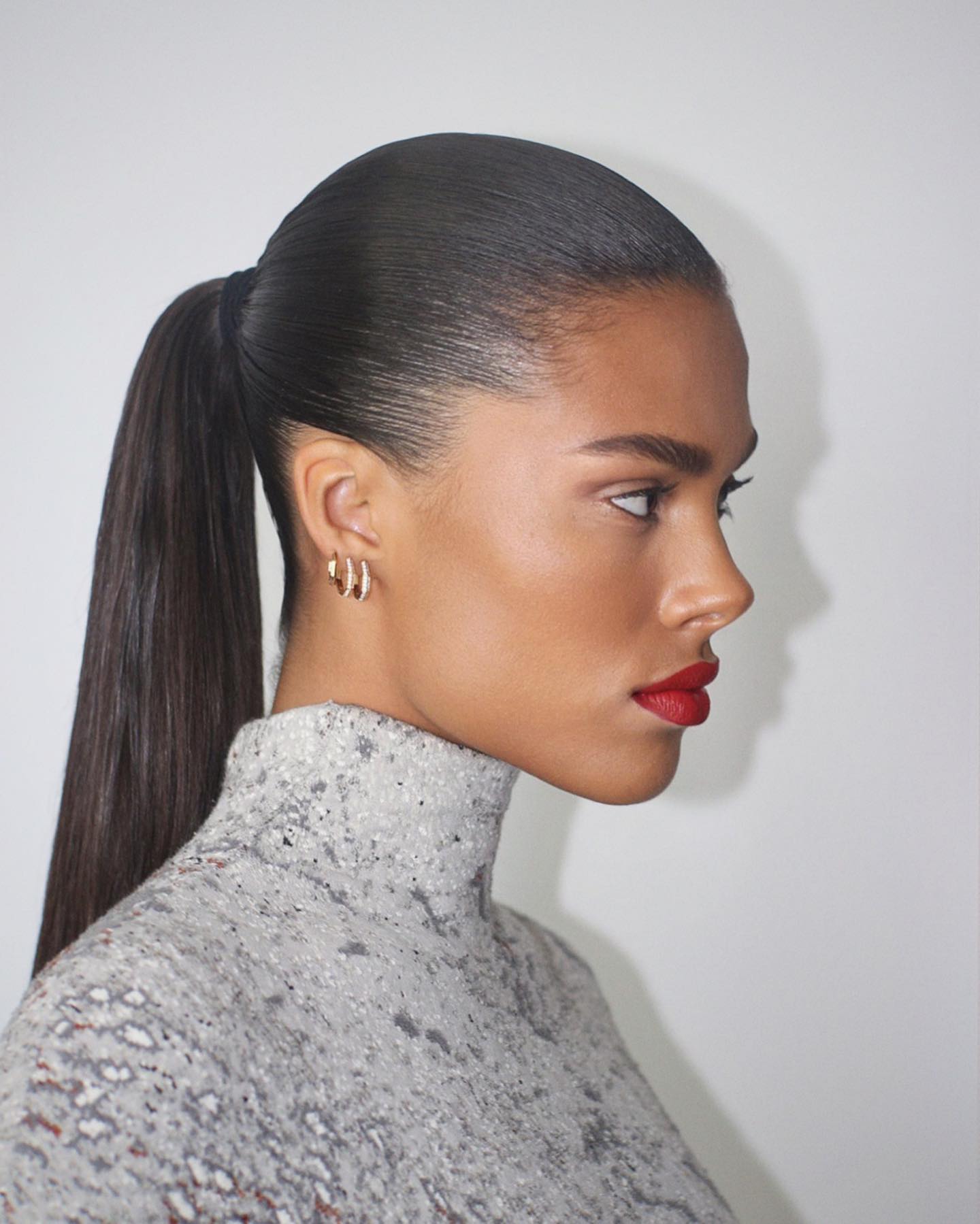
Name of piercing: Floating lobe (also goes by a "stacked lobe" piercing)
Where on the ear: A floating lobe sits on the higher or top end of the lobe, usually in between a standard first and second lobe piercing
Healing time: 2-4 months on average
Pain scale: 2.5/10
The piercing technique: The piercing is typically done with a piercing gun or a needle.
3. Tragus Ear Piercing
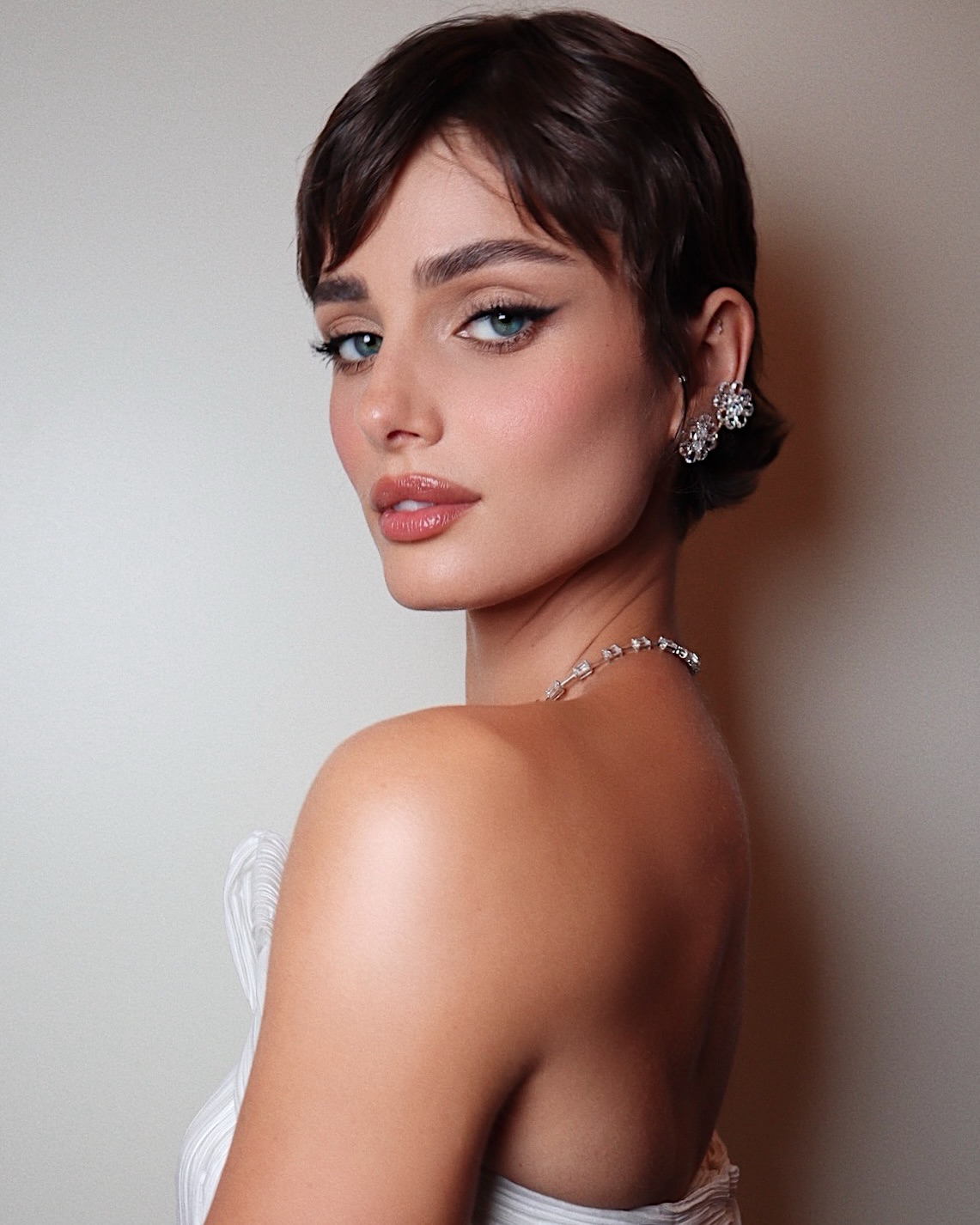
Name of ear piercing: Tragus
Where on the ear: This subtle placement goes through the small cartilage flap that partially covers the ear canal
Healing time: 6-12 months
Pain scale: 6/10
The piercing technique: The piercing is typically done with a needle. "If you wear earplugs or in-ear headphones, this might not be the piercing for you unless you don't mind taking a break whilst your piercing heals," says Jabbar. "The tragus is an anatomy-dependent piercing, so you will need to consult with your piercer to make sure you can have this piercing."
There is a misconception that a tragus piercing may be painful due to its thickness, says Hristova. "In reality, since there are no nerve endings present, you will experience a sensation of pressure from the needle rather than actual pain," she says. "Some mild swelling and soreness may follow, but this typically subsides within a few days."
4. Flat/Scapha Piercing
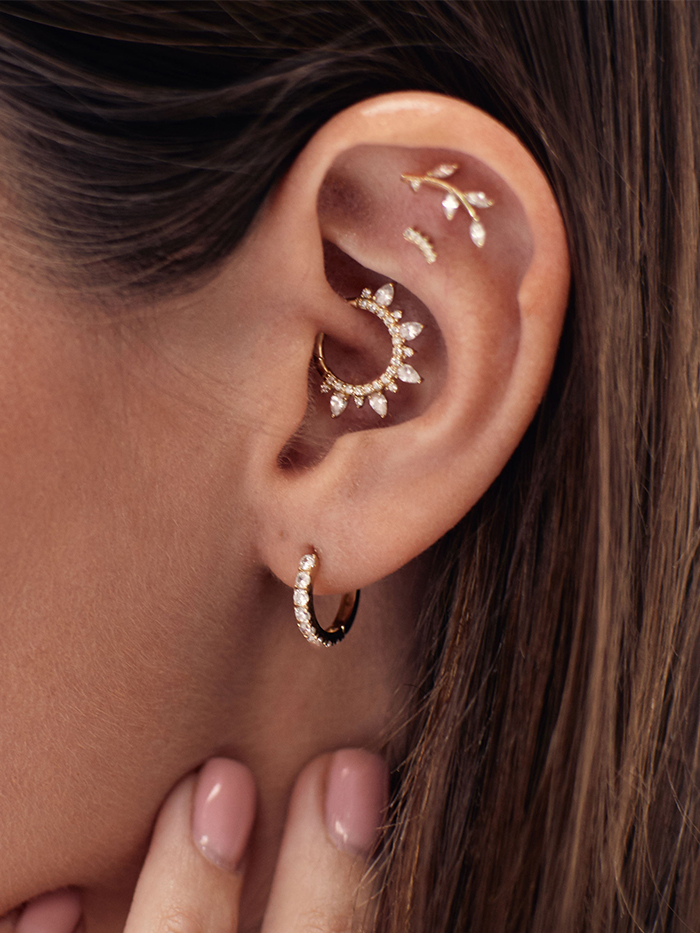
Name of piercing: Flat (it also goes by the name of a flat helix or scapha)
Where on the ear: The flat surface at the top of the ear
Healing time: 6-12 months on average
Pain scale: 6/10
Piercing technique: This area is pierced with a needle.
5. Forward Helix Piercing

Name of piercing: Forward Helix
Where on the ear: At the front of the top of the ear, right where your baby hairs sit
Healing time: 6-12 months on average
Pain scale: 7/10
The piercing technique: This area is pierced with a needle. "The forward helix piercing is an anatomy-dependent piercing; you will need to consult with your piercer to make sure you can have this piercing," says Jabbar.
6. Helix Piercing
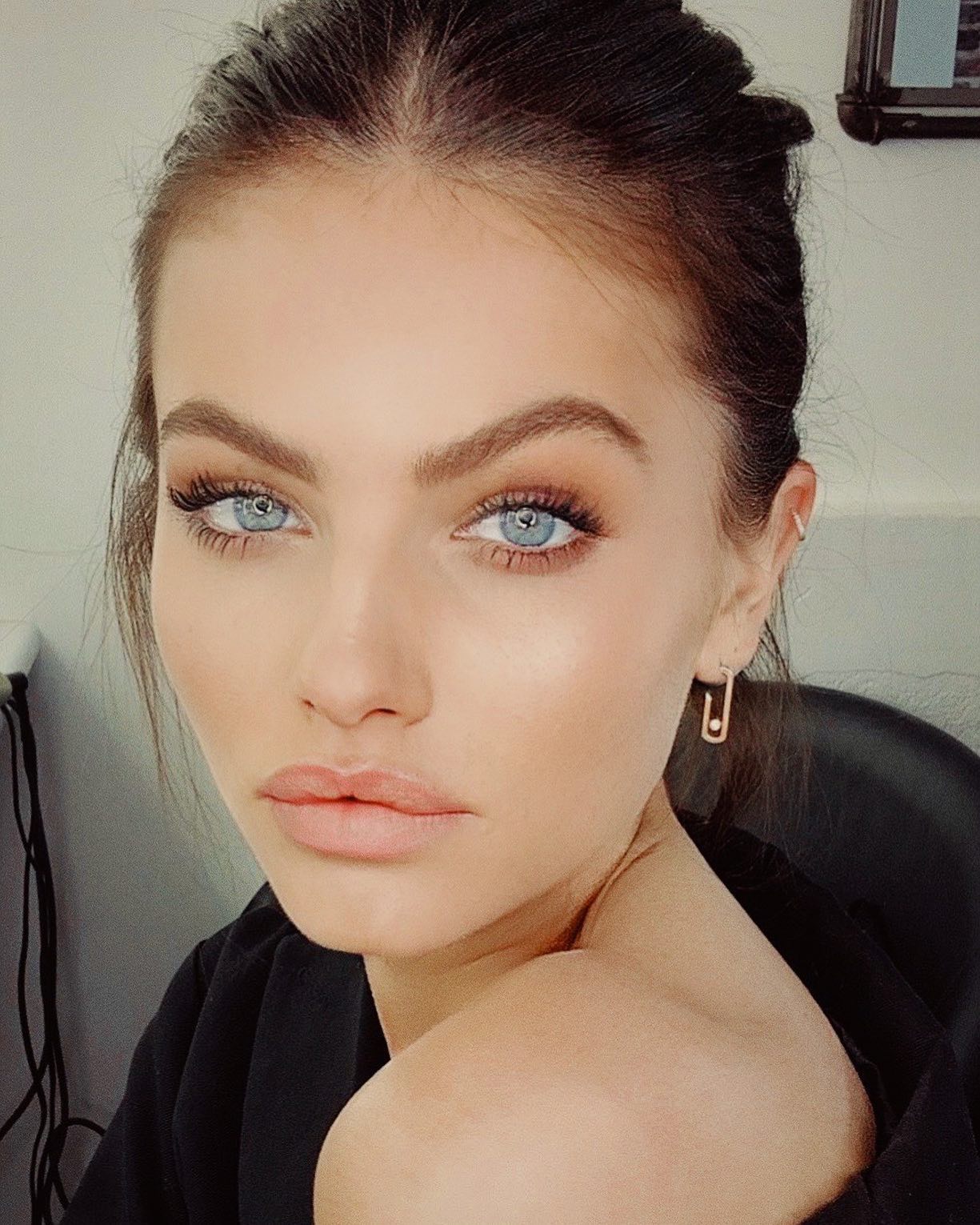
Name of piercing: Helix
Where on the ear: On the outer edge of the top part of the ear
Healing time: 6-12 months on average
Pain scale: 5/10
Piercing technique: This piercing is done with a needle. " If you wear a cycling or motorcycling helmet, this might not be the right piercing for you unless you don't mind taking a break for a while. Ski-ing would also be a no-no for at least a few months," says Jabbar.
"Be cautious not to change the earring or downsize the bar prematurely, as the cartilage inside may appear healed but can still be damaged," says Hristova. "Patience is essential to avoid infections from improper cleaning routines or excessive touching and movement of the earring. It's important to never leave your helix piercing without an earring, even for short periods, as the healing process will begin immediately and the hole may close up overnight," she says.
7. Industrial Piercing
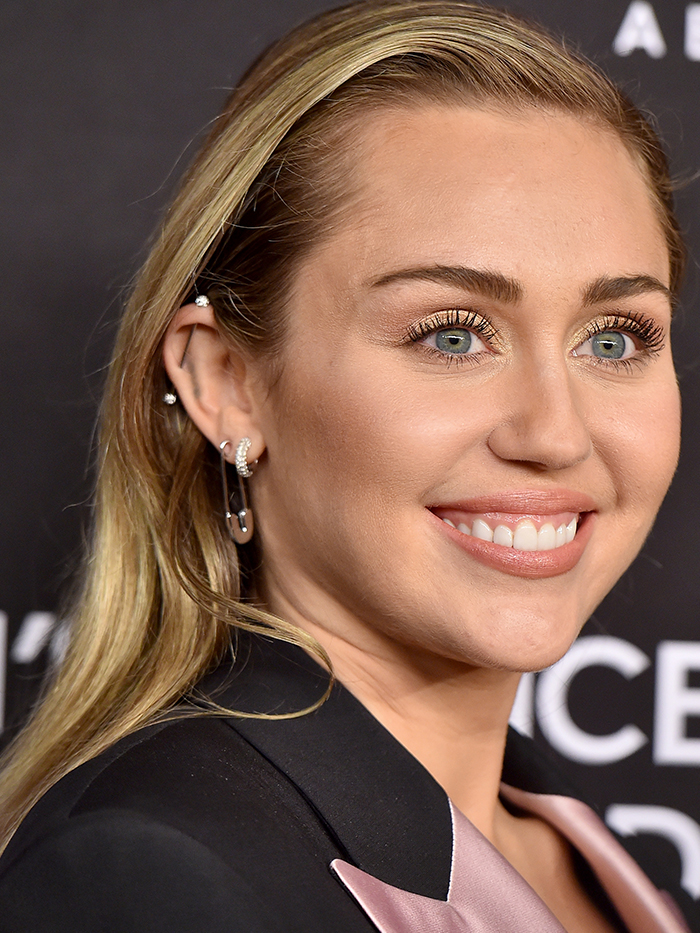
Name of piercing: Industrial piercing
Where on the ear: An industrial piercing is essentially a forward helix and standard helix piercing joined together
Healing time: 6-12 months on average
Pain scale: 5/10
Piercing technique: This area is pierced with a needle. "The industrial piercing is an anatomy-dependent piercing. I prefer piercing the forward helix and standard helix separately with labrets to allow them to heal a lot easier, fitting the bar or chain at a later date," says Jabbar.
8. Auricle Piercing
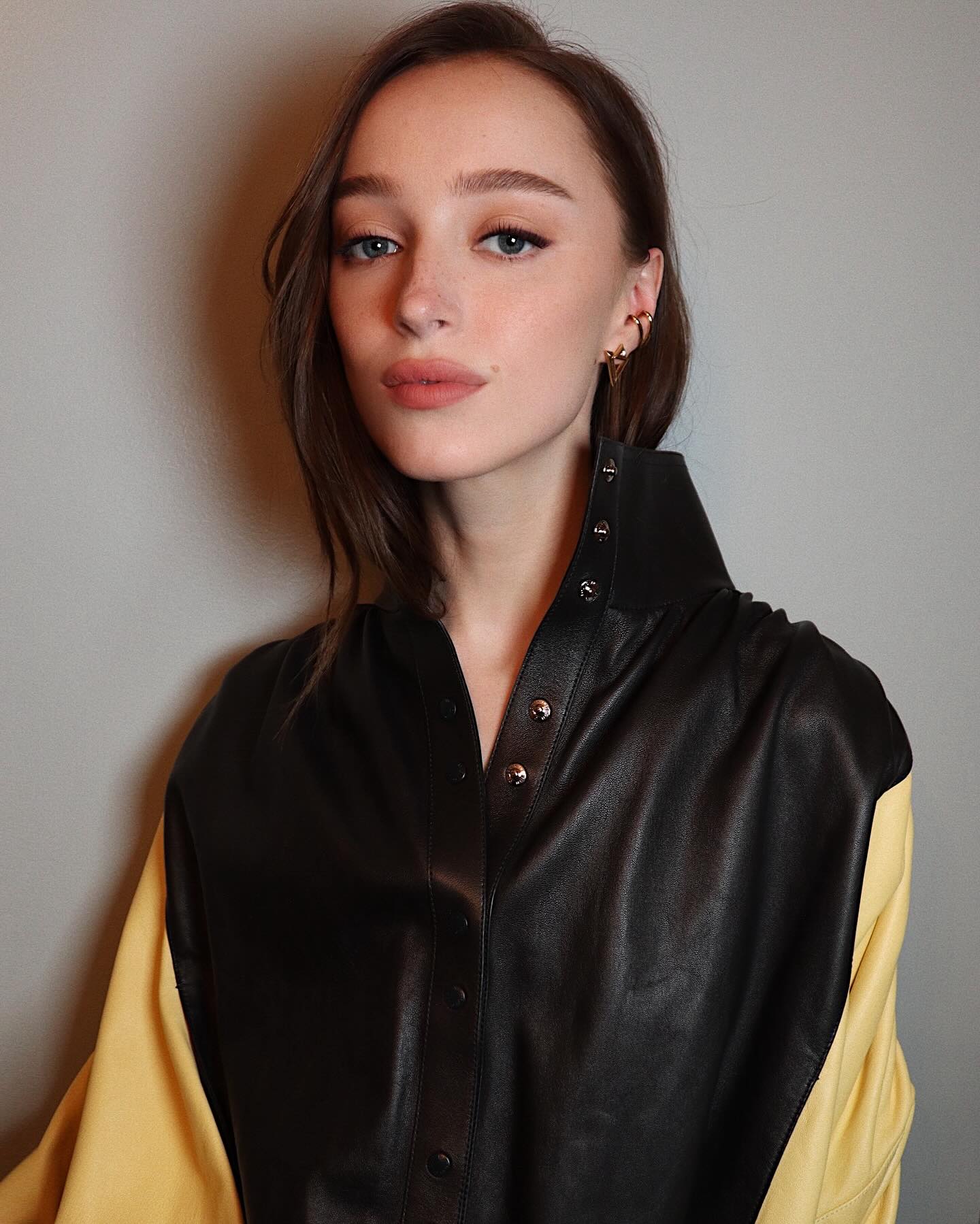
Name of piercing: Auricle (or Lower Helix)
Where on the ear: On the outer edge of the middle part of the ear
Healing time: 6-12 months on average
Pain scale: 4/10
Piercing technique: This area is pierced with a needle.
9. Rook Piercing
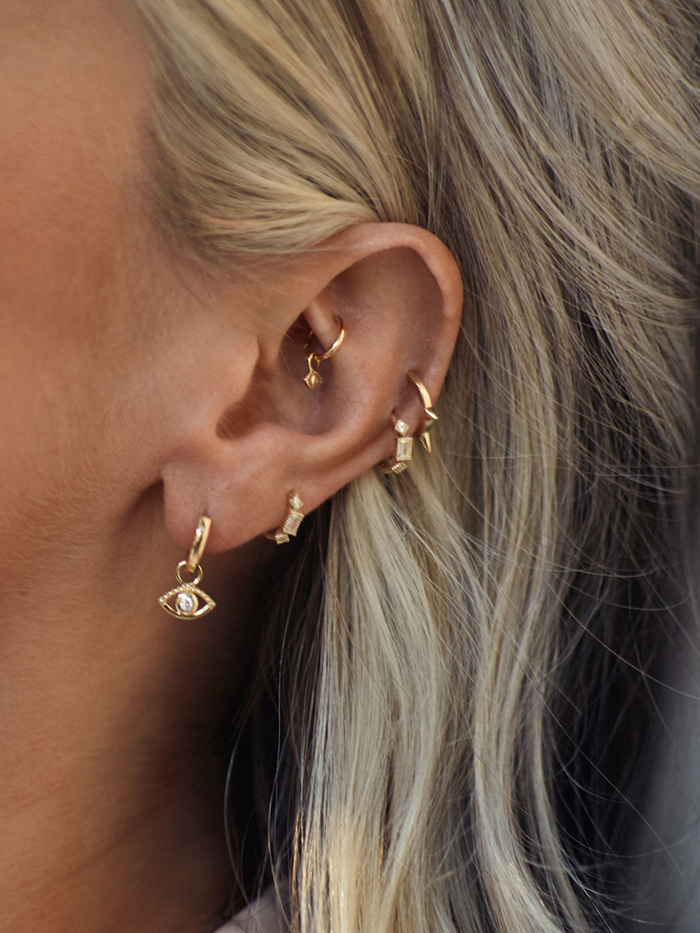
Name of piercing: Rook
Where on the ear: Inside the ear, above the daith and next to the forward helix
Healing time: 6-12 months on average
Pain scale: 6/10
Piercing technique: This area is pierced by a needle. "The rook is an anatomy-dependent piercing; you will need to consult with your piercer to make sure you can have this piercing," says Jabbar.
10. Daith Piercing

Name of piercing: Daith
Where on the ear: Quite far inside of the ear, the daith small part of cartilage above the ear canal, between the rook and tragus.
Healing time: 9-12 months on average
Pain scale: 8/10
Piercing technique: This area is pierced with a needle. "The daith is an anatomy-dependent piercing. From experience, I would say on average only 50% of people wanting a daith piercing actually have the optimal anatomy," says Jabbar. "If you wear earplugs or in-ear headphones, this might not be the piercing for you unless you don't mind taking a break whilst your piercing heals."
11. Conch Piercing
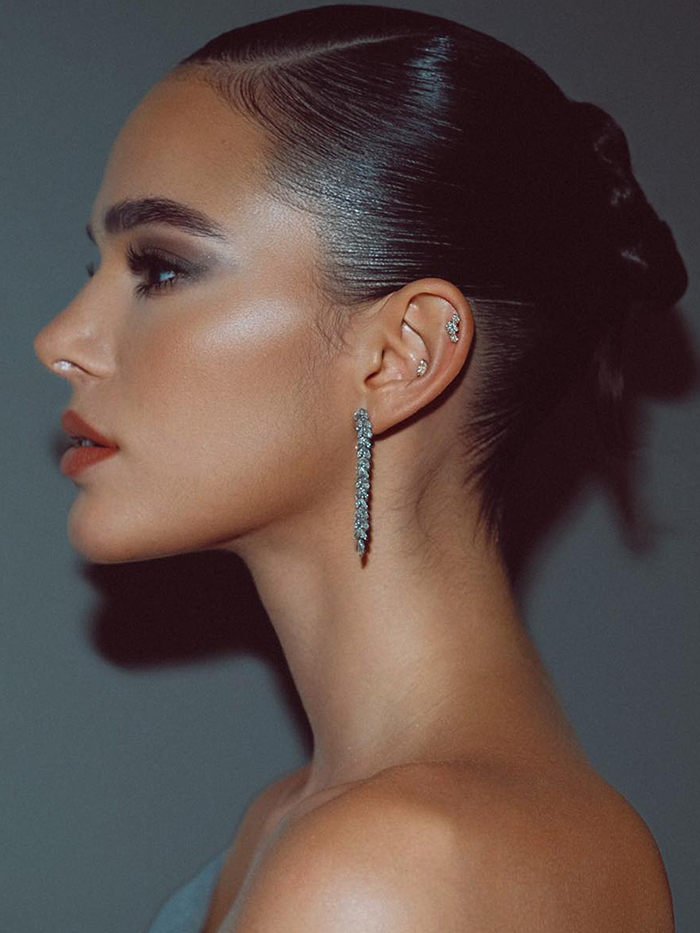
Name of piercing: Conch (outer conch is just a varied placement)
Where on the ear: Inside the centre of the ear
Healing time: 4-6 months on average
Pain scale: 4/10
Piercing technique: This area is pierced by a needle. "The conch piercing is one of the easiest cartilage piercings to heal, but if you're not quite sure that you want to commit just yet, no problem! Test it out with an ear cuff," says Jabbar.
12. Orbital Piercing
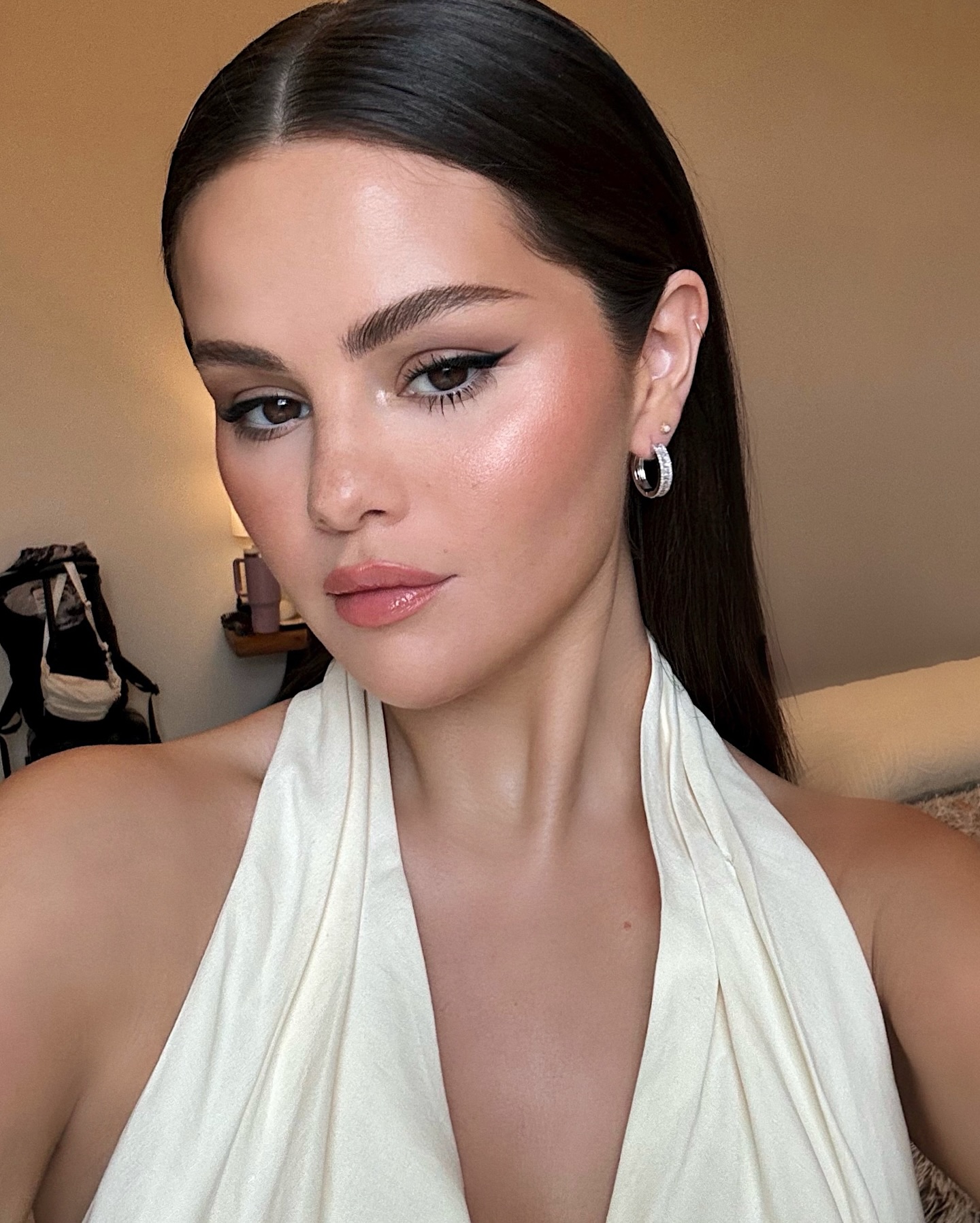
Name of piercing: Orbital
Where on the ear: An orbital piercing can be in a variety of placements. An orbital piercing is when you have two separate but parallel piercings that are connected with a ring. It is very similar to the industrial piercing except it’s with a ring and not a barbell.
Healing time: Dependent on placement
Pain scale: Depends on placement
Piercing technique: This is pierced with a needle.
13. Anti-Tragus Piercing
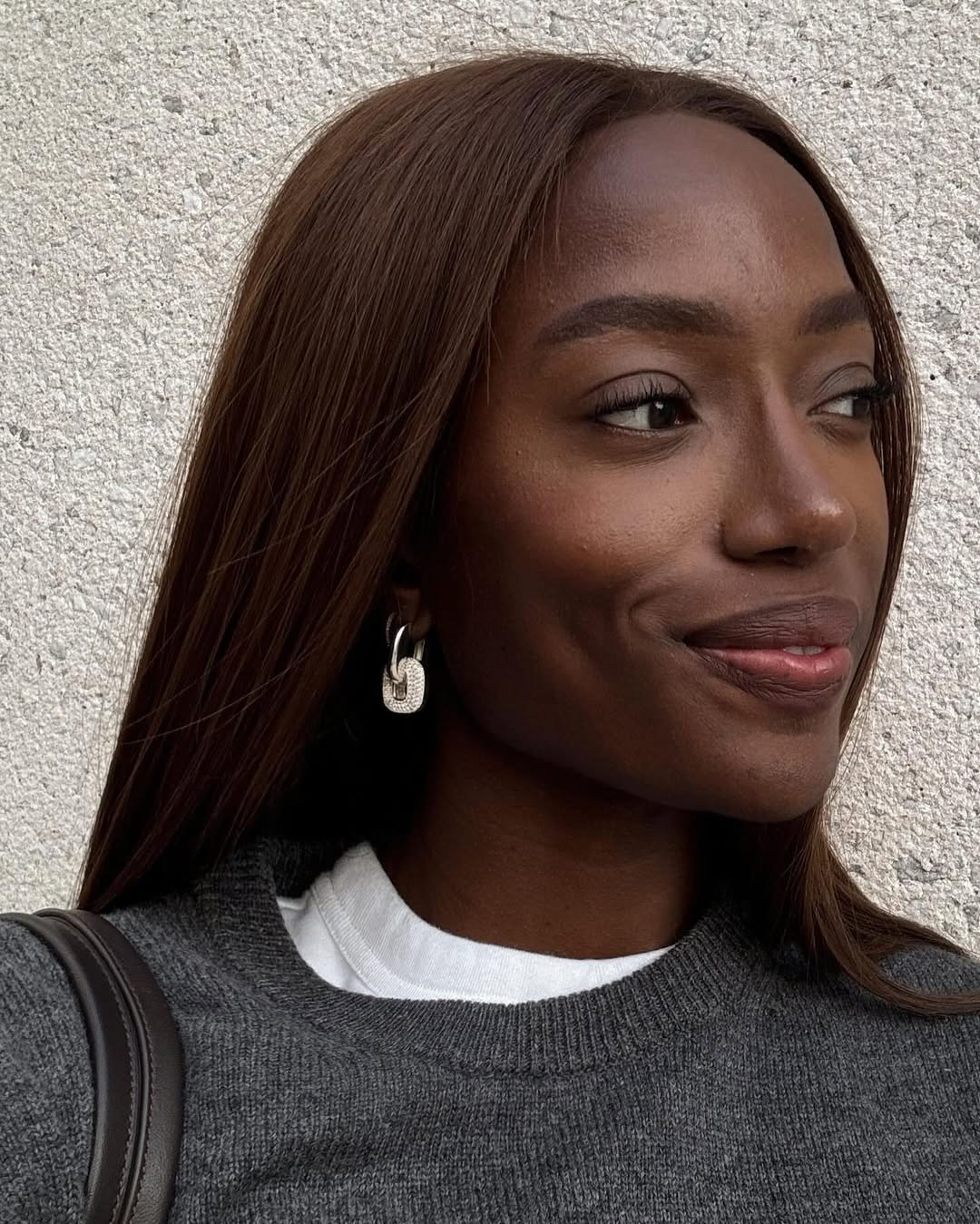
Name of piercing: Anti-Tragus
Where on the ear: Below the tragus, parallel to where your first lobe would sit
Healing time: 6-12 months on average
Pain scale: 6/10
Piercing technique: This area is pierced with a needle.
Shop Earrings to Suit the Types of Ear Piercings
1. Loren Stewart 14-Karat Recycled Gold Diamond Single Earring
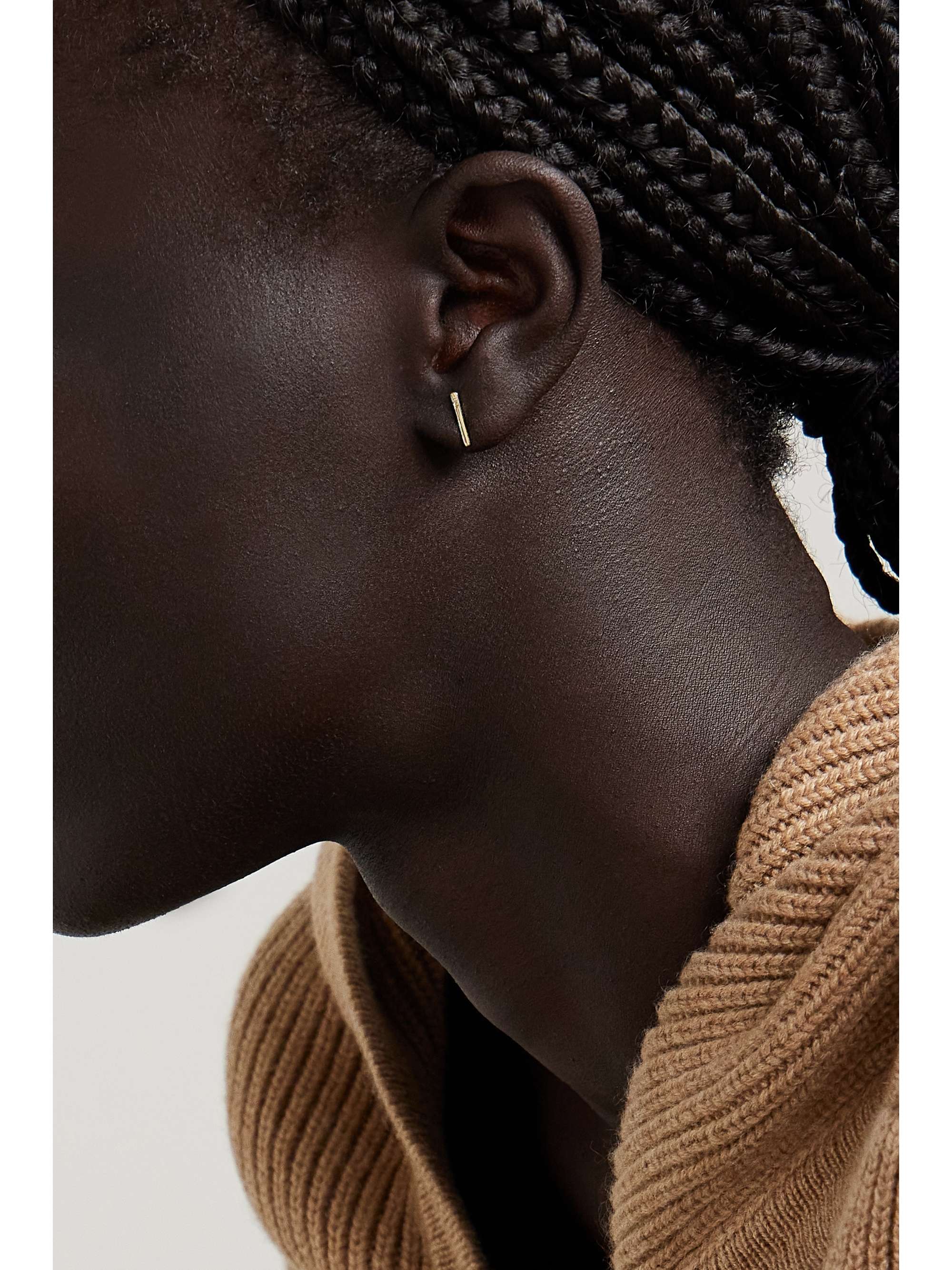
This is the perfect example of what we love about the fine piercing jewellery trend. Such a chic way to softly accent a flat ear piercing.
2. Heaven Mayhem Mini Knot Yellow-Gold Plated Metal Stud Earrings
3. Mejuri Gold Vermeil Dome Huggies
4. Swarovski Stilla Stud Earrings
5. Maria Tash Invisible Set Baguette Diamond Eternity Hoop Earring
6. Maria Tash 6.5mm 14-Karat Rose Gold Hoop Earring
7. Mejuri Puffy Charlotte Hoops
8. Mejuri Cartilage Pavé Diamond Mini Hoop
9. Mejuri Single Cluster Hoop Charm
10. Martha Calvo Kaia Gold-Plated Crystal Hoop Earrings
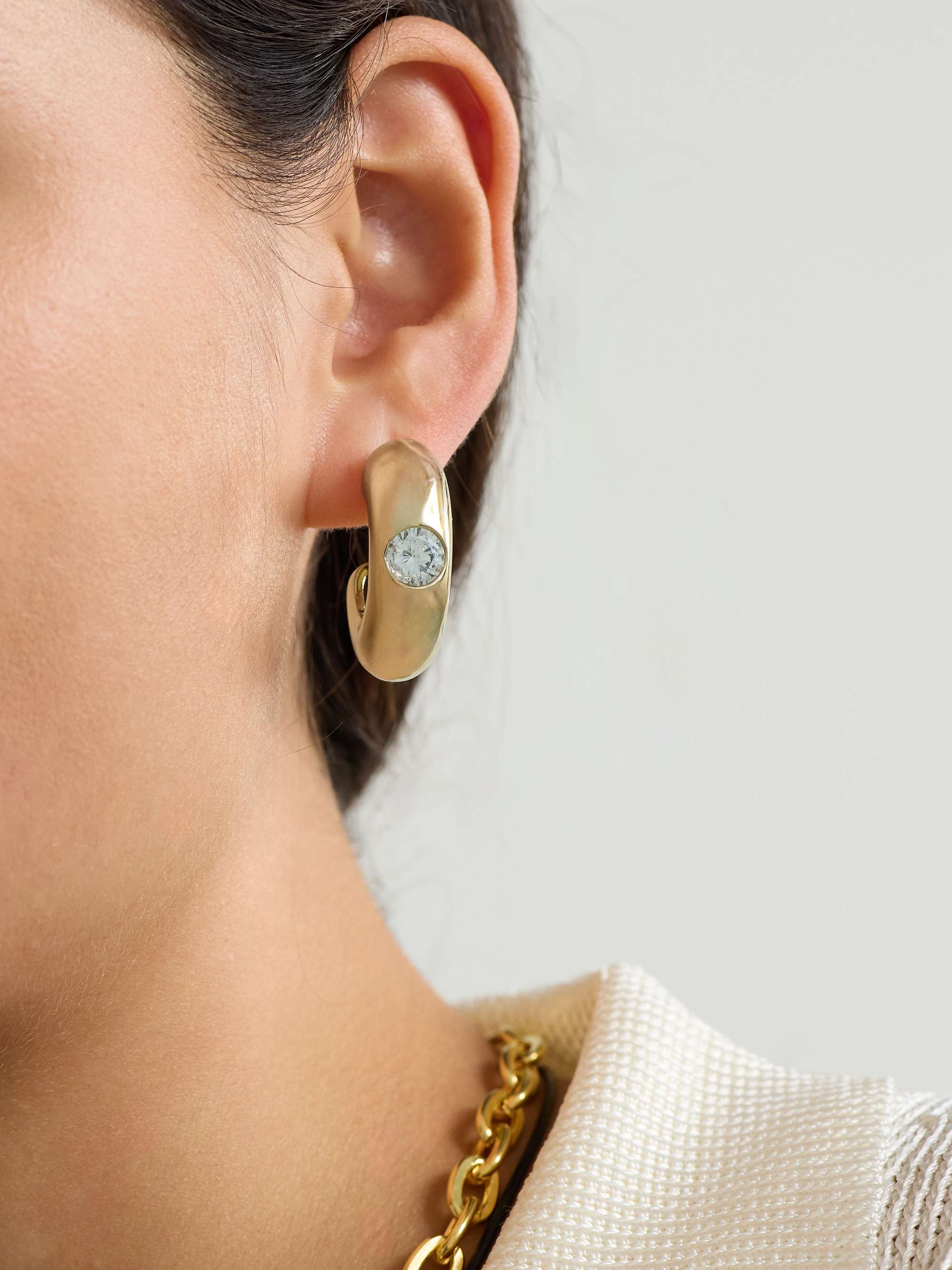
Similar to how we've seen a rise in dome engagement rings, statement stones are all the rage for ear jewellery, too.
11. Maria Tash 3.5mm Ball Trinity Threaded Stud 14-Karat White Gold Single Earring
12. Pandora Pandora Moments 18mm Charm Hoop Earrings
This story was published at an earlier time and has since been updated.
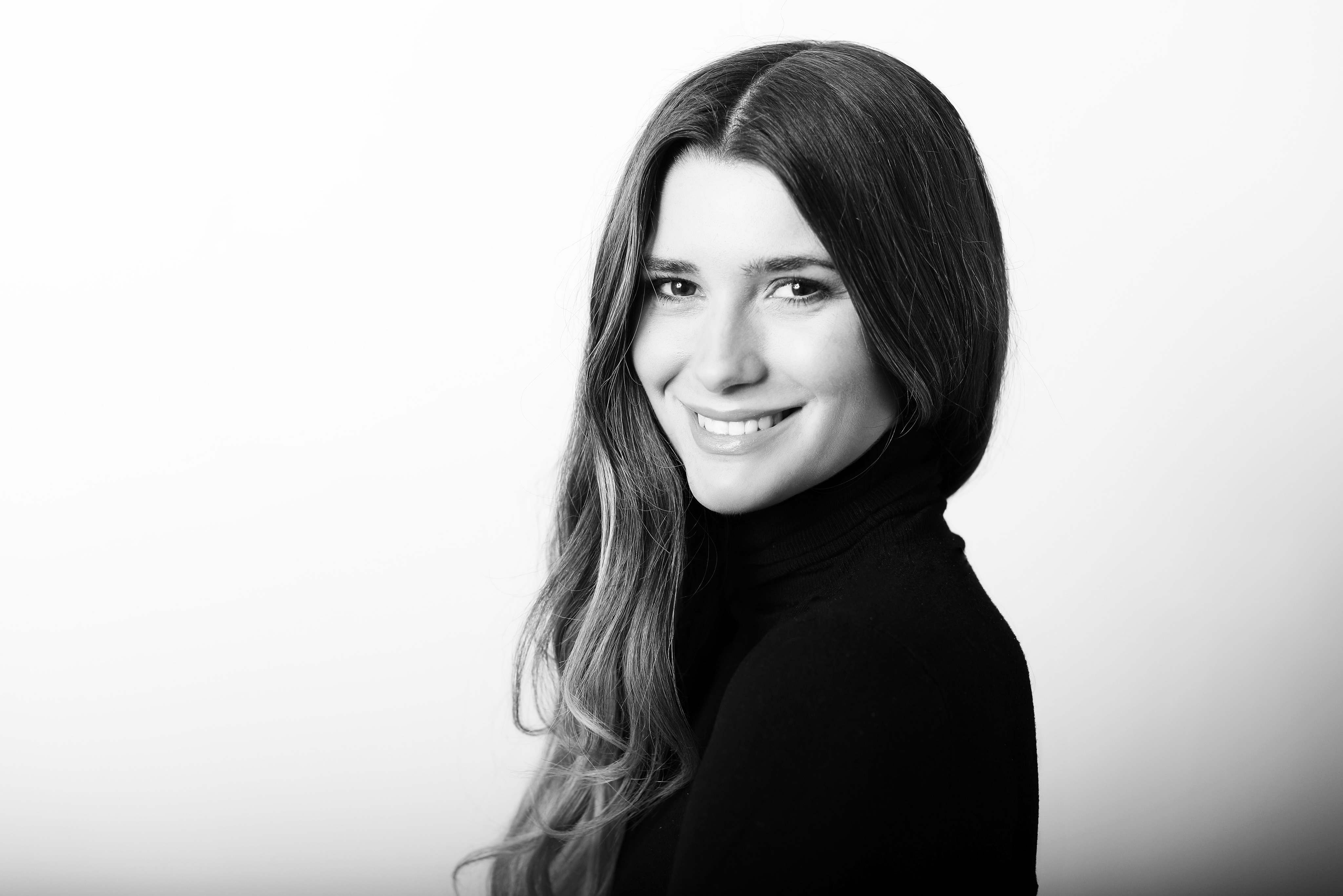
Eleanor Vousden is the beauty editor for Who What Wear UK. She was previously deputy editor at Hairdressers Journal, health writer at Woman & Home and junior beauty editor at Powder. She has also contributed to Wallpaper and Elle Collections.
With a degree in fashion journalism from the London College of Fashion, she has 10 years of industry experience and has been highly commended at the BSME Talent Awards for her work on Powder and also contributed to the title winning Website of the Year at the PPA Awards.
Eleanor’s journalistic focus is providing readers with honest and helpful beauty content. She has interviewed celebrity makeup artists, hairstylists and dermatologists throughout her career, as well as celebrities such as Hailey Bieber, Sarah Jessica Parker and Scarlett Johansson.
- Ava GilchristSEO Writer
